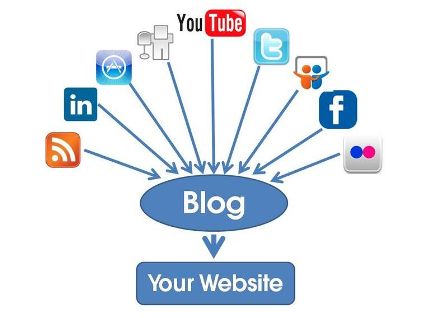Last updated on September 24th, 2020 at 11:28 am
 Traditionally, dental marketing has one target: new patients.
Traditionally, dental marketing has one target: new patients.
While this is of course needful, limiting themselves to this single objective is where the majority of dentists miss the marketing “boat.” With all of their marketing resources stretched in an effort to bring new people in, patients of record get nothing more than recall reminders or (if they’re lucky) an occasional canned newsletter.
From a marketing perspective – calling this a “shame” is letting it get off lightly! Why? Many dentists spend a considerable amount of money to get a new patient. Only to turn around and spend nothing to keep them! While customer service is a key to this, marketing also plays a part. Consider this: at MGE, we’ve found that most offices have maybe 20% compliance in recall (meaning that 20% of their patient base visits regularly – i.e. twice a year for a 6-month recall). Think for a minute. What would happen if this percentage hit 50% or 80%? Yeah…they would be a heck of a lot busier! In most cases why isn’t it?
One word: marketing!
That recall patient coming once a year when he/she should be coming twice? The answer: marketing.
How about that patient who hasn’t been in for five years? Again…marketing.
Maybe you do Invisalign or some such ortho program. What about all of those patients of record who could benefit from this service that you aren’t seeing regularly (or at all). Yup. Marketing.
Now, before we go further, let’s make something clear. We’re not suggesting you don’t market for more new patients. For that matter, we have a course about it that’s rather effective: The MGE New Patient Workshop. What we’re saying is you should place a similar degree of importance on marketing to both your existing patient base as you to new patients.
And from a marketing perspective, you would actually expect a higher percentage of response from patients of record. Why? Well, even if they’ve only been to your office once five years ago, that’s one more time than any new patient has been there. Hence, there is a higher degree of familiarity with your office than a new patient and a higher response with marketing.
Alright then, we think you get the point: you should also be marketing to patients of record! To that end, here are a few marketing ideas to get you started:
1. Survey Your Patients
In any marketing activity, it’s vital to survey your target audience (in this case, the patients you already have) on their needs, wants, opinions, etc. regarding dental care and your practice. This “market research” is essential for nailing down the direction for your marketing before you invest a considerable amount of time and money. Without surveys, any marketing plan is a “hit-or-miss” at best.
The general response from these surveys will vary from practice to practice. Surveys will give you valuable insight for:
1. Patient education and communication via blogs, social media, newsletters as well as internal office displays and images (posters, photographs, etc).
2. The strengths and weaknesses (if any) in patient care and customer service, giving you a chance to reinforce the strengths and address any weak points.
As an example, one practice found after surveying that patients thought the staff was friendly and upbeat. But their patients also felt they were waiting too long while in the office. With that data, the practice knew exactly what to do to enhance their customer service, creating loads of goodwill with their patients.
2. INTERNAL: Promotion Inside Your Dental Practice
a. Make your patients aware of everything you offer
To complement the customer service in your internal marketing to existing patients, put up attractive displays in your lobby and other areas of the practice where patients can see them – without it making the practice look too busy. Get bright, visually appealing posters of your services on the walls and smaller advertisements on the front desk, cabinets, and tables. This could be anything you’d like: cosmetic, ortho, or anything else. We’ve seen plenty of cases where patients went to another office because they didn’t know their dentist offered a particular service they wanted!
b. “Starting” the conversation
In addition to posters of your services, small witty displays that invite dialogue from patients about their oral care are invaluable. Examples of this could be a funny cartoon image with a sign that says: “Want to change your smile? Ask us how.” and “Struggling with bad breath? Talk to your doctor.” Again, your survey answers on what patients feel is most important about their teeth and what they would like to improve functionally or cosmetically can give you good ideas for this type of thing.
c. RESULTS, RESULTS, RESULTS
There’s nothing like promoting excellent results from your practice to boost patient trust and your reputation. A great way to do this is to create a book with “before and after” photographs of your best work (and matching patient testimonials if possible.) NOTE: Make sure you get signed releases from them before you include their material in the book, which should be visibly placed in your reception waiting area.
Do this for as many of your procedures as possible. It is also a great tool in treatment acceptance. “A picture is worth a thousand words” might be a cliché, but it certainly applies here. While explaining the treatment and the importance of it is vital, relevant “before and after” pictures that show actual results will go a long way toward improving treatment acceptance.
3. EXTERNAL: Newsletters and other direct mailings
Here are a few relatively low-cost ways to externally market to your patient base.
Quarterly newsletters
 While the presentation in your newsletters should always be attractive and easy-to-follow, you don’t have to go above and beyond to make them look like high-end, fancy magazines. A simple, clean layout in 4 pages would work just fine. Newsletters can be printed and sent out by direct mail or sent via e-mail (a lower-cost option).
While the presentation in your newsletters should always be attractive and easy-to-follow, you don’t have to go above and beyond to make them look like high-end, fancy magazines. A simple, clean layout in 4 pages would work just fine. Newsletters can be printed and sent out by direct mail or sent via e-mail (a lower-cost option).
Above all – your newsletter should be ORIGINAL. In other words, you and/or your office write it! Patients can detect a canned newsletter. Sure it takes more time – but so what! It means a lot more and you’ll usually see a better response. As far as content, you can use newsletters to educate patients on their teeth and health issues related to dentistry, like tooth decay, gingivitis, and bad breath. On top of that, talk about the clinical procedures in your practice, such as crowns, fillings, cleanings, as well as more advanced and cosmetic procedures if you have them. Do one informational topic per newsletter.
You also have the option of including a limited-time special offer related to that specific topic. For example, let’s say you (or whoever is creating this newsletter) wrote about teeth whitening. Along with that article, somewhere on the page, give a special discount on teeth whitening with an expiration date. Something to entice patients to call your office and schedule.
You can also feature news about your office, and anything you’d like to get patients to participate in, like referral programs.
4. EXTERNAL: Web Marketing
a. Strive to interest patients in following your blog and on social media
Include a blog on your website. Blogging comes with several advantages:
1. Writing online blog posts on the same educational topics that you might use for your newsletters increases patients’ knowledge about your office and their oral health. This can definitely assist with treatment acceptance.
2. Consistent new content through your blog will ultimately help with your websites visibility and search engine (Google, Yahoo, etc.) rankings.
3. It ties right into social media campaigns. Use Facebook, Twitter, and Google + to get more exposure for your blog posts to existing patients. Once you start getting likes and comments on these, you know that people are more receptive to your communication. That interaction is key.
b. Social Media
Blogging is a cousin to social networking sites. Post regularly on social media (at least 1-2 times a day, with posts that create some kind of response from patients. The more likes, comments, and messages you get, the more successful your social media efforts will be in generating revenue and production for you. Encourage your patients to leave reviews on your Facebook page and Google.
We cover the subject of social media more in-depth in another blog post. Click here to read.
We hope this article helps. If you want to have more control and fantastic results with patient reactivation, internal marketing, as well as get more new patients in the door, do the MGE New Patient Workshop. Call now (800) 640-1140 or (727) 530-4277 for more information!
Best of luck!

